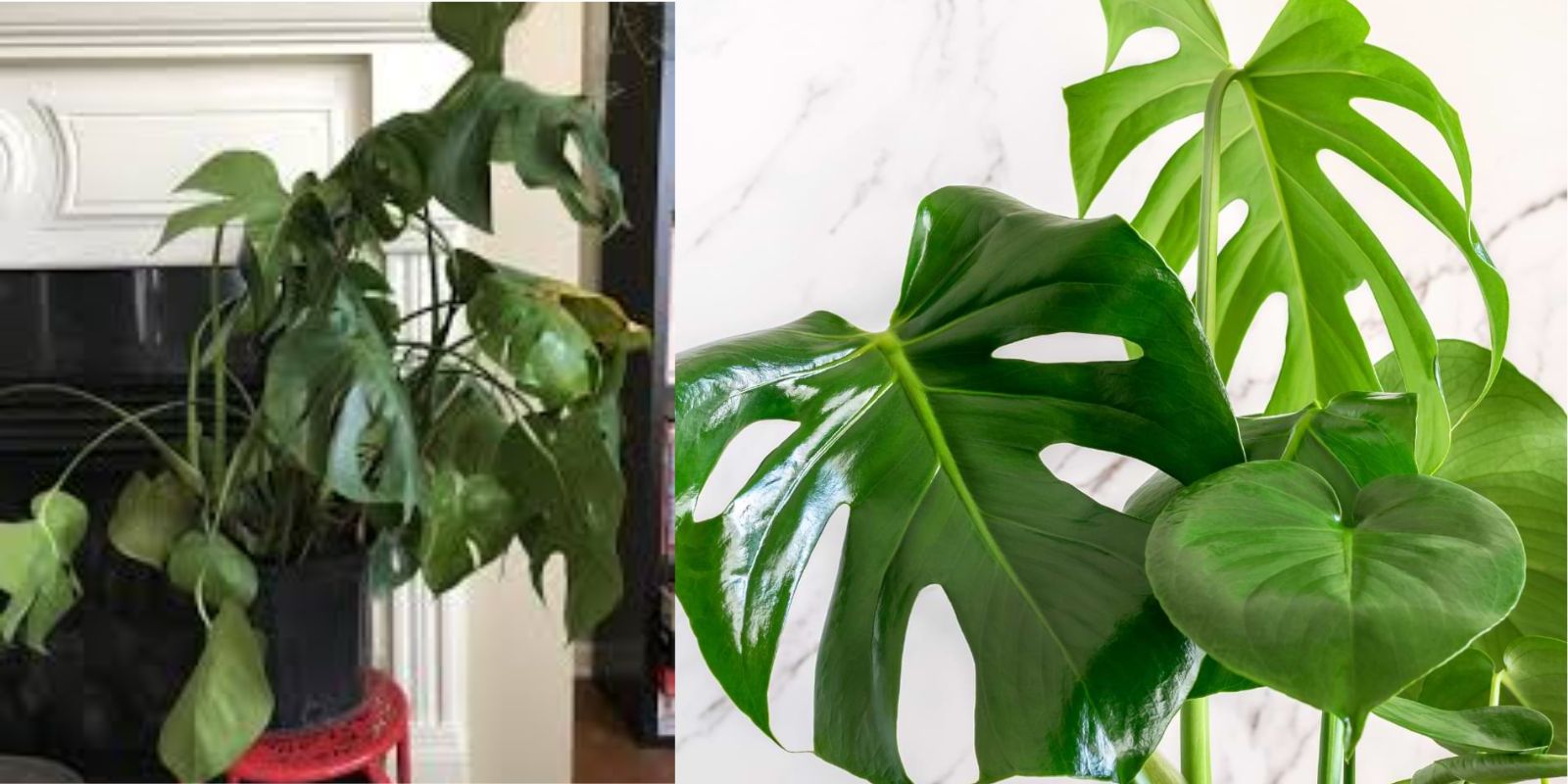Monstera plants, often referred to as the “Swiss cheese plant” due to their unique leaf holes and splits, have gained immense popularity among houseplant enthusiasts. Their lush foliage and tropical aesthetic make them a coveted addition to any indoor garden. However, even the most dedicated plant parents can find themselves faced with the unfortunate sight of a drooping Monstera. If your Monstera is looking less than vibrant, fear not! This comprehensive guide will walk you through the steps to revive your drooping Monstera plant, ensuring it thrives once again.
Understanding the Causes of Drooping
Before diving into the revival process, it’s essential to understand what might be causing your Monstera to droop. Several factors can lead to this issue, including:
- Watering Issues: Overwatering or underwatering can both cause drooping leaves. Monsteras prefer their soil to dry out slightly between waterings, making it crucial to find the right balance.
- Light Conditions: Monstera plants thrive in bright, indirect light. If they are placed in low light conditions, they may become leggy and droop as they stretch toward the light source.
- Nutrient Deficiency: A lack of essential nutrients can weaken the plant, causing leaves to droop and yellow.
- Pests and Diseases: Pests like spider mites or aphids can attack your plant, leading to drooping leaves. Fungal infections can also weaken the plant’s overall health.
- Humidity Levels: Monsteras are tropical plants that thrive in high humidity. Low humidity levels can cause stress, leading to drooping.
- Environmental Stress: Sudden changes in temperature, drafts, or moving the plant to a new location can cause shock, resulting in drooping leaves.
Step-by-Step Guide to Revive Your Monstera
Now that we understand the potential causes of drooping, let’s explore the step-by-step process to revive your Monstera plant.
Step 1: Assess Watering Needs
The first step in reviving your drooping Monstera is to assess its watering needs:
- Check Soil Moisture: Stick your finger about an inch into the soil. If it feels dry, it’s time to water. If it’s soggy, your plant may be overwatered.
- Watering Technique: When watering, do so thoroughly until water drains from the bottom of the pot. This ensures that the roots are receiving adequate moisture.
Step 2: Adjust Light Conditions
Monstera plants prefer bright, indirect light. Here’s how to ensure your plant gets the right amount of light:
- Location: If your Monstera is in a dimly lit area, consider moving it closer to a window where it can receive filtered sunlight.
- Avoid Direct Sunlight: While they enjoy bright light, direct sunlight can scorch their leaves. Use sheer curtains to diffuse the light if necessary.
Step 3: Inspect for Pests
Pests can be a significant issue for indoor plants. To check for pests:
- Visual Inspection: Examine the leaves and stems closely for any signs of pests. Look for small webs, sticky residue, or tiny insects.
- Treatment: If you notice any pests, treat your Monstera with insecticidal soap or neem oil. Be sure to follow the instructions on the product label.
Step 4: Trim Damaged Leaves
Trimming can help redirect the plant’s energy toward new growth:
- Pruning: Use clean, sharp scissors to remove any yellowing or damaged leaves. This not only improves the plant’s appearance but also encourages healthier growth.
Step 5: Boost Humidity
As tropical plants, Monsteras thrive in humid conditions. Here are some ways to increase humidity:
- Misting: Lightly mist the leaves regularly, especially during dry winter months.
- Humidity Tray: Place a tray filled with water and pebbles under the pot. As the water evaporates, it increases humidity around the plant.
- Humidifier: Using a humidifier in the room can also significantly boost humidity levels.
Step 6: Fertilize Wisely
Nutrients play a crucial role in plant health. Consider the following when fertilizing:
- Type of Fertilizer: Use a balanced, water-soluble fertilizer during the growing season (spring and summer). Look for a fertilizer with equal parts nitrogen, phosphorus, and potassium (e.g., 20-20-20).
- Fertilizing Schedule: Apply fertilizer every 4-6 weeks during the growing season. Avoid fertilizing in the fall and winter when the plant is dormant.
Step 7: Provide Adequate Support
If your Monstera is drooping due to leggy growth, it may need support:
- Staking: Use a moss pole or stake to support the plant. This encourages upward growth and provides stability to the stems.
Step 8: Monitor Environmental Conditions
Keep an eye on the environment surrounding your Monstera:
- Temperature: Maintain a consistent temperature between 65-85°F (18-29°C). Avoid placing the plant near drafts or heating vents.
- Air Circulation: Ensure proper air circulation around your plant. This helps prevent mold and pests.
Step 9: Be Patient
Reviving a drooping Monstera takes time. After implementing these steps:
- Observe: Monitor your plant for signs of improvement over the next few weeks. Look for new growth and healthier leaves.
- Consistency: Maintain a consistent care routine, adjusting as needed based on your plant’s response.
Additional Tips for Healthy Monsteras
To prevent future drooping and ensure your Monstera thrives:
- Regularly Rotate: Rotate your plant every few weeks to ensure even light exposure on all sides.
- Repot When Necessary: If your Monstera has outgrown its pot, consider repotting into a larger container with fresh soil to promote healthy growth.
- Keep Leaves Clean: Dust can accumulate on the leaves, hindering photosynthesis. Wipe the leaves gently with a damp cloth to keep them clean.
Conclusion
Reviving a drooping Monstera may seem daunting, but with patience and the right care techniques, you can restore your plant to its vibrant state. By assessing watering needs, adjusting light conditions, and addressing any pest issues, you’ll be well on your way to a thriving Monstera. Remember to provide the right environment and nutrients, and your plant will reward you with beautiful foliage for years to come.
Don’t forget to share your Monstera journey on social media! Use hashtags like #MonsteraLove #PlantCare #HouseplantJourney to connect with fellow plant enthusiasts and showcase your thriving plant! 🌿🌱

